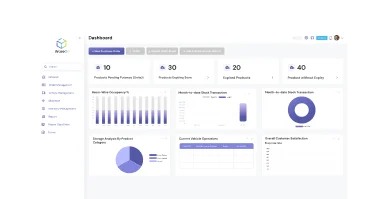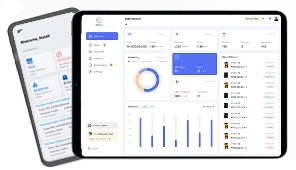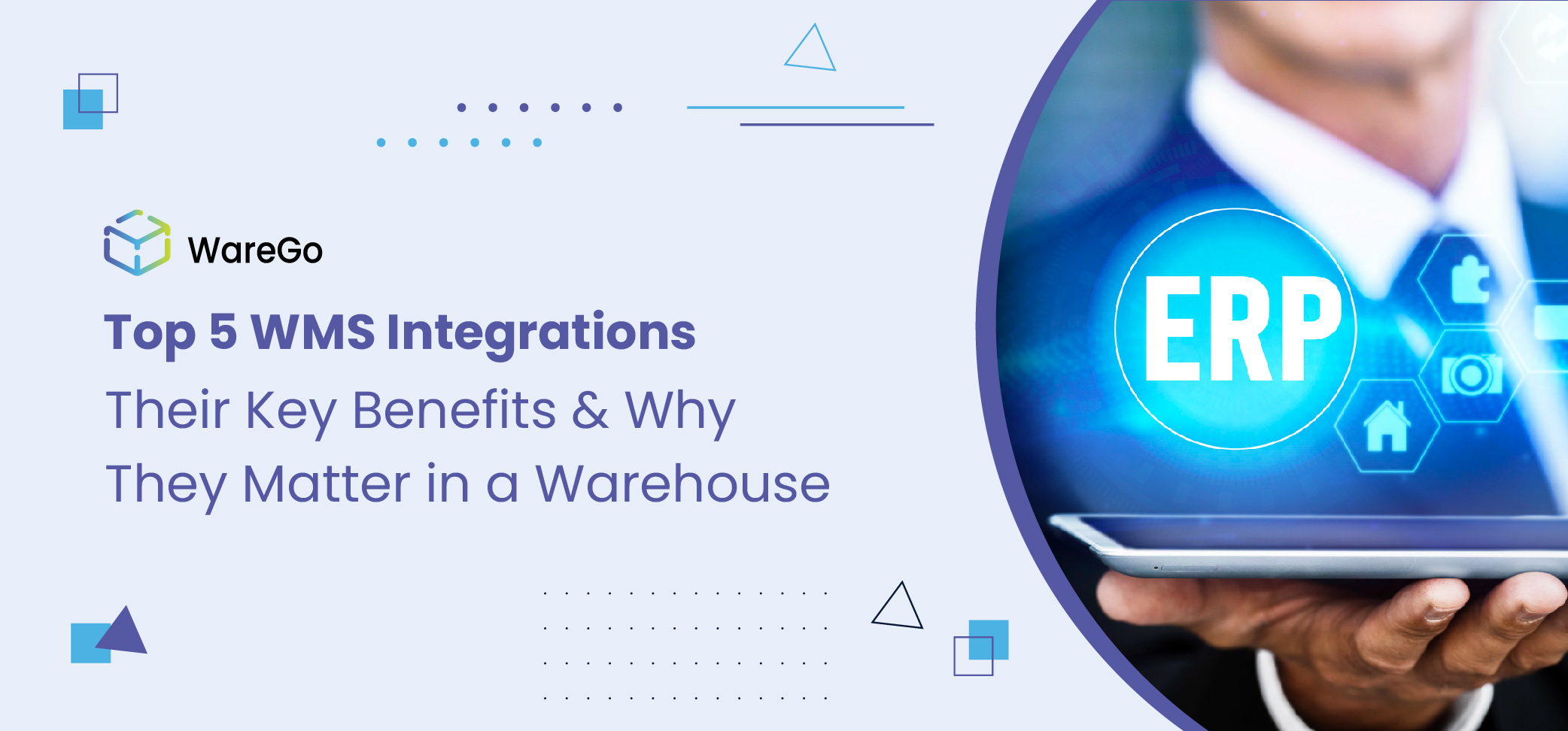
Today’s e-commerce brands are not limited to a single channel; they are present across multiple platforms, including Shopify, Amazon, and many others.
According to an eMarketer report, multi-channel sellers can earn more revenue, with a 160% increase in revenue.
Brands with warehouses are investing more in WMS integrations to unify operations, reduce errors, and build everything effortlessly.
However, as the order speed increases, inventory spreads out in warehouses, making it complex to maintain balance & accuracy. This is why warehouse management software comes in.
In this blog, we’ll break down how WMS integration works, its benefits, challenges, and some best practices for synchronizing your tech stack, as well as how WareGo drives its efficiency with growth.
Table of Contents
What are WMS integrations?
WMS integrations connect your wms with other platforms to complete your daily activities and grow your operations.
These include various platforms, such as ERP, e-commerce, shipping carriers, and CRM tools. These integrations ensure real-time tracking and communication within the systems.
According to the latest market report, the warehouse integrations market is projected to reach $55 billion by 2030.
Let's get ready & start your journey with WareGo.
Get Started Now!Top 5 WMS Integrations
WMS integrations enable 3PL providers to enhance warehouse operations by automating key tasks and maintaining accuracy throughout the process.
By utilizing wms integrations across various channels, we can support efficiency & long-term growth.
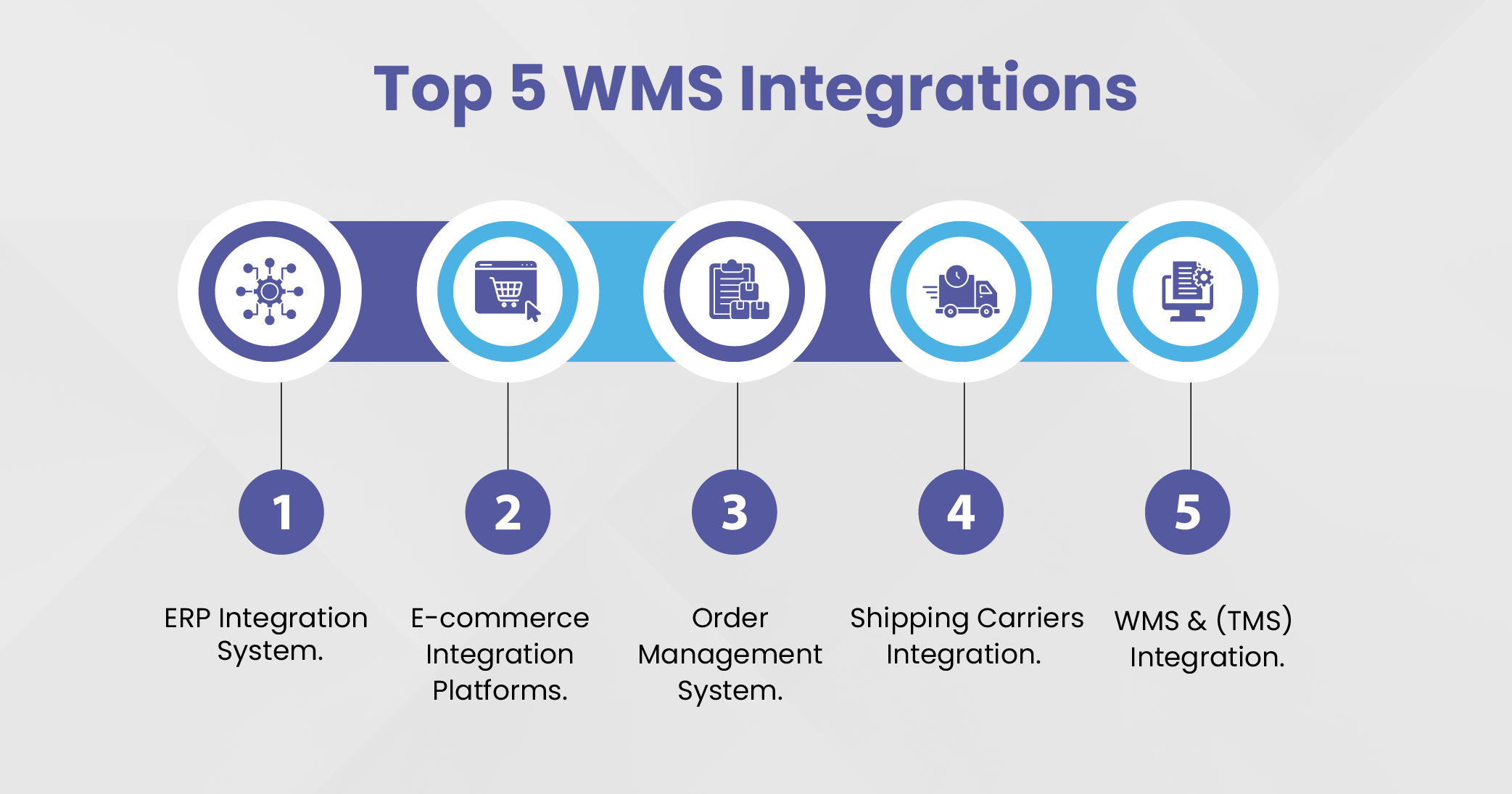
Here is a closer look at the five different types of WMS integrations. Each one is designed to unravel common challenges within an integrated warehouse system.
1. ERP Integration System
Example: NetSuite, SAP, and Microsoft Dynamics.
Enterprise resource planning (ERP) integration systems are critical software to minimize WMS profits.
An ERP system provides unified views of operations, inventories, procurement, and data synchronization in real-time.
Why It Matters?
- Simplifies the operations.
- Supports growth over different WMS platforms.
2. E-commerce Integration Platforms
Example: Shopify, Amazon, Walmart.
WMS integration with ecommerce platforms automates online orders from the store to your WMS.
It also imports orders, tracks real-time inventories & updates them, which is essential for e-commerce processes.
How does it help?
- Allow your WMS to sync inventory levels in your 3PL.
- It helps to communicate and send information back & forth regarding little details for orders & inventory levels.
3. OMS (Order Management System)
Example: linnwokrs, Skubana.
OMS centralizes orders from various sales channels, simplifying and improving the routing process.
OMS splits itself between WMS to ensure a seamless order and fulfillment process.
It’s Operational Value:
- Increases order accuracy & speed.
- Supports several sales channels operations.
4. Shipping Carriers Integration
Example: FedEx, DHL.
This integration is directly connected to carriers such as FedEx or DHL, automating the creation of labels ready for print & tracking numbers.
Carriers recover live rates and send tracking updates for shipments to customers through various e-commerce platforms, keeping them informed about the progress of their shipments.
Key Benefits of using carriers:
- Reduces the number of software platforms.
- Automates label creation.
5. WMS and transportation management system (TMS) integration
Example: MercuryGate, Shipwell.
TMS integration increases the planning, tracking, and execution of goods transported from one place to another.
It helps reduce errors and provides real-time coordination for shipments, enabling analysis for performance improvement.
How is it useful:
- Route planning and optimization.
- Seamless integration capabilities.
Key Benefits of WMS Integrations
WMS integrations support your specific workflows and business goals.
By choosing them, you unlock not only greater efficiency but also the benefits of integrating WMS with other systems, including accuracy and scalability, to support your growth.
If you are running a multi-location WMS or offering a 3PL warehouse management system, you cannot ignore WMS software, as they are undeniable.
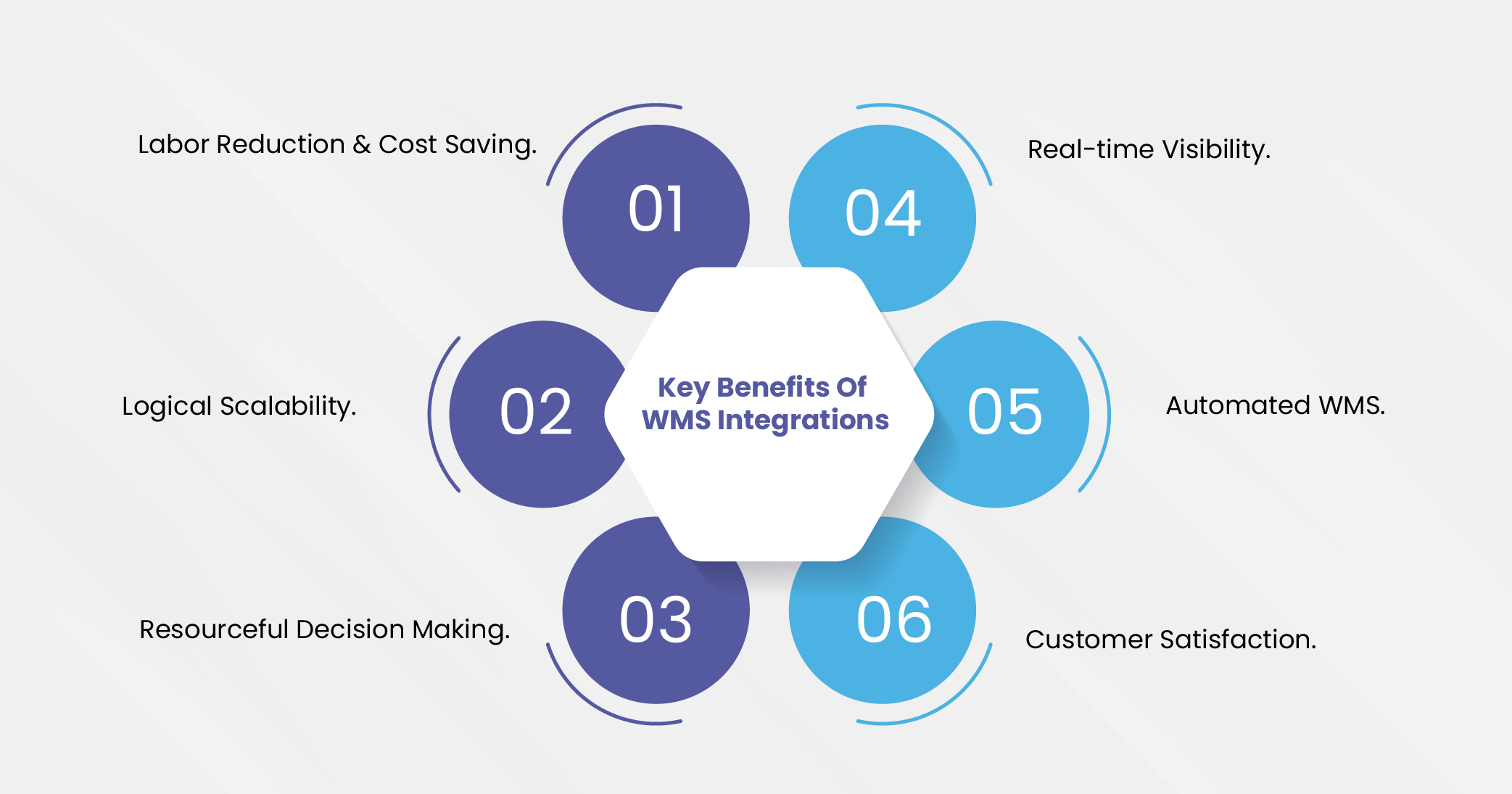
Let’s explore how a contemporary, integrated WMS enhances efficiency and raises your operations to the next level.
1. Real-Time Supply Chain Visibility
One of the main benefits of warehouse integration is clearer visibility.
Real-time supply chain visibility provides a 360-degree view of your inventory, orders, shipments, and live customer tracking.
A McKinsey study claims that companies with real-time inventory visibility can reduce out-of-stock rates by up to 30%.
2. Automated WMS With Efficiency
Warehouse management integration is designed to optimize, automate, and streamline workflows, making operations faster and more efficient for users.
A report by WERC has confirmed that WMS integrations can increase warehouse productivity up to 27%.
Tasks that require multiple touchpoints are now completed automatically, such as syncing orders or updating stock levels.
3. Customer Satisfaction
By sharing real-time data and live stock tracking through WMS integration with warehouses.
Now you can process orders more quickly, resulting in improved customer satisfaction.
Salesforce states that 80% of customer expectations are based on real-time communication related to orders, making WMS integration with e-commerce platforms a genuine need.
4. Labor Reduction & Cost Saving
Plug-and-play integrations, such as barcoding, TMS, or a mobile Inventory system, can be implemented to reduce labor hours and prevent inventory from going to waste.
Introducing automated systems can reduce safety risk by 50% and inventory shrinkage by 40%.
The cost efficiencies enable businesses to reallocate resources towards the growth and development of the industry.
An excellent strategy for offering affordable and cost-effective WMS integrations in the United States.
5. Logical Scalability
A well-integrated warehouse system involves scalability expansion without affecting daily tasks.
In case you are adding new locations to warehouses or onboarding new clients, your system stays up to date.
According to Statista, 45% of WMS plans to expand their tech stack by 2026, with scalability cited as the top priority.
6. Resourceful Decision Making
Bring more comprehensive analytics & report capabilities to be more informed and enhance your decision-making and strategic planning.
Data-driven operations are 23% more profitable than regular ones.
An increase in profitability is directly proportional to the adoption of advanced automation, real-time data analysis, and enhanced decision-making.
Don't let manual processes underestimate your hard work! Compute your WMS with Warego
Explore WareGo For Free!Common Challenges of WMS Integrations & How to Overcome Them
Sometimes, it’s not just about recognizing the benefits, but also about preparing for specific circumstances or challenges that may arise.
While the benefits are undeniable, it’s essential to examine how challenges in WMS system integration can affect data accuracy, visibility, real-time workflow, and other critical aspects if left unaddressed.
The table outlines some common obstacles you might face using a wholesale inventory management system or a standard WMS.
The good news is that there are actionable strategies to overcome them before a significant loss occurs.
Let’s dive into the challenges & how to tackle them:
| Common Challenges | Reason For It | How to Overcome |
| Data WMS and Migration | Moving data from legacy & eliminating inventory tracking. | Adapt robust data validation tools to cleanse the data before importing. |
| Solving System Compatibility | WMS integration with outdated ERPS creates data silos and synchronization issues. | Go with WMs with an API-based WMS for faster compatibility. |
| Synchronizing within Real-Time Data | Inaccurate inventory records or a lack of focus on peak seasons. | Ensure your integrated wms supports real-time data records. |
| Ineffective Project & Communication Management | Maintaining communication gaps with teams & without coordination can lead to cost overruns & delays. | Discuss each month’s project plans, with timelines and stockholders’ involvement. |
| Appropriate Vendor Selection | Choosing the wrong vendor can lead to project failure. | Select the best WMS integration among all to align your business goals with vendors. |
| Complex Customizations | Over-customization can be time-consuming & affect the scope creep. | Create a plan for the workflow before you begin. Opt for WMS platforms like WareGo. |
Is WMS integration a Vital Part for Business Growth?
WMS integrations are no longer just a technical update in today’s competitive landscape. It’s more like a need or a strategic necessity.
A well-maintained integrated system works as the central hub for all operations. They integrate WMS with e-commerce platforms, EPPs, CRMs, and TMS solutions, bringing all these systems together into a single, cohesive platform.
WMS integrations eliminate data silos and provide a unified, real-time view of your inventories & orders within custom activities, ensuring that data has been cross-referenced from every department.
This seamless connectivity accelerates workflows, reduces errors, and enhances order accuracy, enabling businesses to fulfill orders more efficiently, update customers promptly, and respond quickly to maintain customer satisfaction and operational excellence.
70% of supply chain leaders observed improvements in productivity & reduction of cost in the first year of implementing WMS integrations
In other words, integrating a warehouse system transforms your warehouse costs into a competitive advantage for your business growth.
Maximize Your Integrations With WareGo
Integrations matter more than we think. Maximizing the potential of a flawless WMS integration system is a real game in today’s business.
From inventory management to e-commerce fulfillment and 3PL processes, WareGo helps you turn your needs into a necessity, executing every aim of your business.
If you need to grow your 3PL, an online retail store, or anything related to WMS, our team supports & helps you build your goals from scratch to success with complete potential.
Learn more about WareGo’s integrated warehouse management system, and get started.
Request a WMS Demo!Frequently Asked Questions- FAQS
What is WMS integration?
WMS integrations refer to connecting WMS with various platforms, like e-commerce platforms, ERP, CRMs, and TMS solutions. This helps to create a flow to connect real-time data across departments, assign automated tasks, and improve overall warehouse efficiency.
What are the benefits of integrating a WMS with other business tools?
The benefits revolve around these business tools:
- Real-Time Supply Chain Visibility.
- Automated WMS with Efficiency.
- Customer Satisfaction.
- Labor Reduction & Cost Saving.
- Logical Scalability.
- Resourceful Decision Making.
How can a WMS integration improve warehouse efficiency?
WMS integrations significantly automate the data between sales platforms, WMS operations & shipping carriers. With this system, you can minimize input, reduce errors, and accelerate the fulfillment process.
What sets WareGo different from others?
WareGo’s WMS is specifically designed for modern e-commerce and 3PL businesses, supporting both outsourced and in-house fulfillments. WareGo offers a range of benefits to its customers, including pre-built integrations, real-time inventory visibility, and more. We also provide an API-based WMS integration, explained in detail, to support custom workflows that help tailor your business more effectively.
